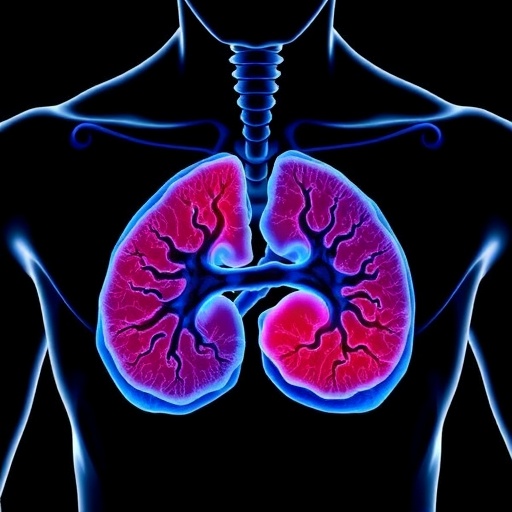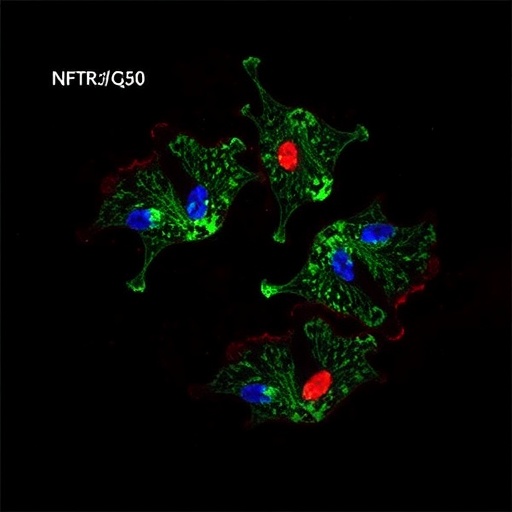In recent years, advances in pediatric oncology have brought forth improvements in treatment protocols for acute lymphoblastic leukemia (ALL), a malignant disease characterized by the rapid proliferation of lymphoblasts. However, as with any cancer treatment, complications can arise, and among these, asparaginase-associated pancreatitis (AAP) has emerged as a significant concern. A recent retrospective analysis sheds light on this issue, especially within the context of rechallenge with pegylated asparaginase, a modified form of asparaginase that’s gaining traction in the treatment landscape. The findings from this study not only underscore the complexities involved in treating pediatric patients but also emphasize the nuanced understanding required to manage the adverse effects of life-saving therapies.
The study examines the phenomenon of AAP in children diagnosed with ALL who have been treated with asparaginase, a critical therapeutic enzyme that reduces asparagine levels, ultimately inhibiting the proliferation of leukemic cells. The retrospective nature of the research affords a broad overview of clinical outcomes, showcasing the challenges healthcare providers face when considering the safety of re-administering asparaginase after an episode of pancreatitis. The implications of its findings could potentially alter treatment pathways, optimizing outcomes while minimizing risks.
AAP is marked by elevated amylase and lipase levels, indicative of pancreatic inflammation. This condition poses not only immediate risks but may also have long-lasting impacts on the patient’s health, necessitating attention to both acute and chronic management strategies. In pediatric oncology, where growth and development are vital, understanding the enduring repercussions of AAP becomes even more critical. Often, standard treatment protocols must be maintained or modified to balance disease control against the backdrop of potential complications.
In their analysis, the researchers focused not only on the frequency of AAP occurrences but also on the risk factors associated with its development. Factors such as age, sex, and underlying health conditions were scrutinized to identify patterns that could inform future clinical practices. Notably, the data revealed that younger patients exhibited a higher propensity for developing pancreatitis when treated with asparaginase, illuminating the necessity for pediatric-specific considerations in treatment regimens. This age-related vulnerability underscores the imperative of tailoring therapy to individual patient profiles.
Complications arising from AAP can lead to significant treatment interruptions, often jeopardizing the effectiveness of leukemia management. During a critical period when aggressive therapy is required, delays induced by complications can result in adverse outcomes. The impact of these interruptions is particularly pronounced in pediatric patients, who may not only face a lowered chance of remission but also encounter heightened risk of relapse. Thus, finding a sustainable solution for managing patients who experience AAP while still benefiting from the efficacy of asparaginase is critical in clinically managing ALL.
Rechallenge protocols with pegylated asparaginase are being explored as an alternative for patients who exhibit AAP, with the aim of improving tolerability. Pegaspargase, by virtue of its extended half-life and altered pharmacodynamics, potentially presents a lower risk for complications such as AAP. However, the decision to rechallenge is fraught with risk, warranting a reflective approach by medical teams. By meticulously analyzing patient histories, clinicians can make informed decisions that prioritize both safety and the efficacy of treatment.
Furthermore, the retrospective analysis reviewed various outcomes in patients who had undergone rechallenge with pegylated asparaginase after suffering AAP. The outcomes of interest included not just the recurrence of pancreatitis, but also the overall response to therapy. Interestingly, some patients managed to successfully tolerate pegylated asparaginase without recurrent complications, a promising finding for oncologists grappling with the management of AAP. This piece of data paves the way for further investigation into patient-specific factors that might determine the likelihood of a successful rechallenge.
The findings of this study resonate with the ongoing dialogue in the pediatric oncology sphere about balancing treatment intensity with the ramifications of potential complications. With the stakes as high as they are in treating ALL, it is imperative to develop and refine protocols that both address the complexities of adverse reactions and maximize therapeutic benefits. As asparaginase continues to occupy a pivotal role in treatment strategies, understanding when and how to utilize it – especially after pancreatitis – is vital in driving forward the standard of care for pediatric populations.
Advancements in data collection and analysis methodologies are essential as researchers seek to untangle the intricate relationship between asparaginase therapy and AAP. As a result, larger multi-center studies could further substantiate the preliminary findings showcased in this analysis. Broader research efforts have the potential to yield comprehensive insights that elucidate risk factors, management strategies, and long-term outcomes associated with AAP, filling critical knowledge gaps.
Moreover, the role of personalized medicine cannot be overlooked in this context. With genetics playing an increasingly prominent part in cancer treatment, identifying genetic predispositions to AAP might enhance the precision of treatment protocols. As insights emerge, future therapeutic approaches may ensure that children diagnosed with ALL receive optimal care, minimizing toxicity while maximizing the potential for successful outcomes.
In conclusion, the insights drawn from the retrospective analysis of asparaginase-associated pancreatitis in pediatric acute lymphoblastic leukemia reflect a critical juncture in pediatric oncology. As clinicians navigate the challenges presented by enzyme-based therapies, the balance between effective treatment and manageable adverse effects remains a central theme. The findings serve to reinforce the notion that tailored approaches in oncology not only enhance patient safety but also uphold the integrity of effective cancer treatment paradigms. Addressing the complexities surrounding AAP in this vulnerable population is an imperative that will hopefully lead to refined treatment protocols that ensure better outcomes for children battling leukemia, paving the way for advances in pediatric cancer care.
Subject of Research: Asparaginase-associated pancreatitis in pediatric acute lymphoblastic leukemia
Article Title: Retrospective analysis of asparaginase-associated pancreatitis in pediatric acute lymphoblastic leukemia: focus on rechallenge with pegaspargase.
Article References:
Jia, C., Li, Q., Zhai, X. et al. Retrospective analysis of asparaginase-associated pancreatitis in pediatric acute lymphoblastic leukemia: focus on rechallenge with pegaspargase.
J Cancer Res Clin Oncol 151, 272 (2025). https://doi.org/10.1007/s00432-025-06333-4
Image Credits: AI Generated
DOI: 10.1007/s00432-025-06333-4
Keywords: asparaginase, pancreatitis, pediatric oncology, acute lymphoblastic leukemia, rechallenge, pegylated asparaginase, treatment complications.
Tags: acute lymphoblastic leukemia treatmentasparaginase-associated pancreatitischildhood leukemia complicationsclinical outcomes in ALLcomplications in leukemia therapymanagement of adverse effects in cancer treatmentoptimizing leukemia treatment pathwayspancreatic inflammation in childrenpediatric oncologypegylated asparaginase rechallengeretrospective analysis of pediatric patientssafety of asparaginase re-administration





